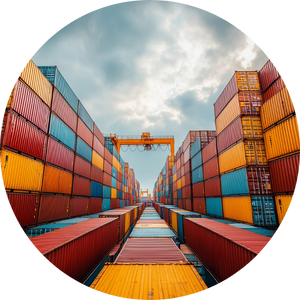In June 2025, U.S. Consumer Price Index (CPI) rose 2.7% year‑over‑year, up from 2.4% in May — marking the steepest jump in five months. Economists estimate that roughly one‑third of that increase stems directly from new tariffs on imported goods, excluding food and energy, also rose to 2.9%, underlying inflationary pressures, all these according to Times. Reuters and The Wall Street Journal.
A study from Yale’s Budget Lab shows that recent tariffs raised U.S. average effective tariff rates from 2.4% to nearly 20% — the highest since the early 1930s. In the short term, that translates to a 2.1–2.3% bump in consumer price levels — equal to a $2,300–$3,800 loss per household.
Now let’s see the real impact in our industry.
The floral industry operates on extremely tight margins — making it nearly impossible to absorb a 10% tariff without passing costs to consumers. According to Florists’ Review, many wholesalers and retailers have no choice but to adjust prices to survive Reuters adds that growing concern over job prospects is undercutting sentiment — despite resilient employment numbers.
Around 80–88% of all cut flowers in the U.S. are imported, mainly from Colombia and Ecuador. These countries previously enjoyed tariff-free access but are now facing new or reinstated duties:
- Colombia: Once tariff-free, now subject to a 10% global tariff.
- Ecuador: Faces a combined ~16.8% duty (6.8% existing plus new 10%).
This has serious implications for an industry that heavily relies on imports to meet demand for key holidays like Valentine’s Day, Mother’s Day, and wedding season.
Direct Cost Pressures
The U.S. Chamber of Commerce estimated that the 10% floral tariff cost the industry $25 million extra just for Mother’s Day, and could total over $210 million annually if kept in place.
Specific Flower Impacts
- Tulips have seen sharp increases due to both tariffs and weather issues in Europe. For example, a shipment of 500 tulip bulbs went from about $223 to $370, a nearly 66% jump.
- Industry surveys show that tariffs have broadly increased wholesale flower costs by 5–15%, depending on variety and season.
How Businesses Are Responding
- Many wholesalers are absorbing part of these costs, limiting price hikes to about 5–10% for consumers to stay competitive.
- Trade groups like the Society of American Florists (SAF) and the American Floral Importers Association (AFIA) are lobbying for tariff relief and working to educate both legislators and customers on the impact.
For Florists & Events
- Retail florists report passing along increases of $0.50 to $1.75 per stem depending on variety. That adds up quickly for weddings and large events, where bouquets and arrangements can involve hundreds of stems.
In Summary
Here’s a snapshot of how tariffs are impacting the floral sector:
Impact | Details |
Price increases | 10–17% tariffs on key imported flowers |
Consumer costs | +$25M for Mother’s Day alone; +$210M yearly |
Florist pressures | Up to +$1.75 per imported stem |
Industry responses | Partial absorption, advocacy, diversification |
It’s a challenging time for a sector already grappling with thin margins and volatile demand cycles. Tariffs are squeezing profits, raising prices for weddings and holidays, and pushing florists to look for new suppliers or local alternatives — often at higher costs.
Lessons From History
Even though I understand the increase in Tariffs are a “Reciprocity Act”, history warns that sustained protectionism can backfire.
In 1930, the U.S. passed the Smoot–Hawley Tariff, raising average tariff rates to nearly 60% by 1932. The result? A global trade collapse and a Great Depression worsened by retaliatory tariffs — all while unemployment soared from 8% to 25%.
Similarly, 2002 steel tariffs under President Bush caused GDP losses and reduced welfare — even after a brief boost to U.S. steel production .
These historical episodes show that rising costs stifle trade, dampen investment, and undermine consumer trust — especially when governments resort to abrupt or unpredictable policy shifts.
Conclusion
Raising tariffs may feel like a quick win for industries or government coffers, but the broader picture is complex. We’re already seeing:
- A 2.7% CPI spike, fueled partly by tariffs.
- Confidence down — consumer hope is fading fast.
- Price offsets from housing and service sectors, but limited relief.
- Historical warnings: from Smoot–Hawley to steel — tariffs often lead to economic drag.
The real test now is whether policymakers will ease pressures — or repeat the mistakes of over‑protection at the expense of everyday consumers. The path forward must balance domestic needs and global stability to preserve both confidence and growth.
Alejandro Henao
The Flower Co.





